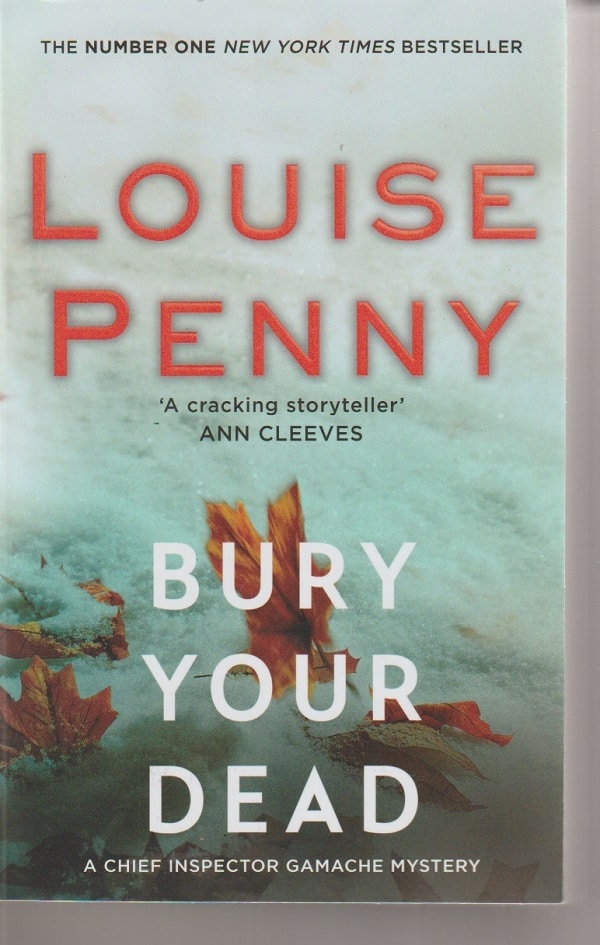Sometimes, a mystery novel, if the writer is ambitious, will have two puzzles to be solved. It’s a complicated gambit for an author since it can leave the reader totally befuddled unless it’s executed very deftly.
So how mad does a novelist have to be to weave through her novel five separate mysteries?
Well, maybe not mad at all if you’re Louise Penny, the highly acclaimed, bestselling Canadian author of 17 novels centering on Chief Inspector Armand Gamache of the Sûreté du Québec, the police force for the Quebec province.
Most of Penny’s novels happen in the fictional village of Three Pines. Her most recent book All the Devils Are Here, however, takes place in Paris, and her 2010 book Bury Your Dead is set, for the most part, in Quebec City.
Five mysteries

It’s Bury Your Dead where Penny trots out five mysteries that Gamache must handle while he is in the province capital recuperating from traumatic events that have recently occurred:
- The first mystery and the strongest emotional thread in the book has to do with those traumatic events. It’s not a mystery for the book’s characters inasmuch as it was a major violent crime that shocked the nation and the world. But the injured Gamache has consciously and subconsciously blocked many of the details. As he recalls them piece by piece, the reader learns of the horrific crime.
- While in Quebec City, Gamache has been doing research at the Literary and Historical Society which Penny depicts as an island of Englishness in the provincial sea of French Canadians. But, one morning, Augustin Renaud, who has made himself an archeological pest with his obsessive search for the burial place of Samuel de Champlain, the founder of the city, is himself found murdered in the Society’s basement. Gamache, somewhat reluctantly, helps search for the killer.
- Meanwhile, the inspector receives daily letters from Tree Pines, raising a key unanswered question from his recent investigation there into the slaying of a man whose body was found on the floor of a bistro. The solving of that mystery was detailed by Penny in her 2009 book The Brutal Telling. But now, Gamache asks his right-hand aide Jean-Guy Beauvoir to reinvestigate the crime.
Those are the police mysteries in Bury Your Dead, but there are two others, both of them historical conundrums:
- Well, where was/is Champlain buried? While investigating Renaud’s murder, Gamache has to try to figure out the answer to this puzzling question, one that has bedeviled Québécois for nearly four centuries. After all, why would the final resting place of such an important man in the history of the city be so shrouded in uncertainty?
- And then there’s the research that Gamache himself has been doing at the Society into the presence of two later famous explorers and cartographers at the 1759 Battle of the Plains of Abraham: the English Captain James Cook and the French Col. Louis-Antoine de Bougainville. Did Cook and Bougainville know each other before the battle? Did Bougainville drag his feet in bringing needed reinforcements to the French forces that lost the battle without them?
Solutions
That’s a lot of puzzle pieces to put before the reader of a 470-page book, a lot of possibilities for crossed wires and a babble of confusion, but, in Penny’s hands, Bury Your Dead is a tour de force of mystery-writing.
It’s rip-snorting fun, never murky, always page-turning, often affecting.
Every mystery is solved, except one. The reader finally learns the true horror of the traumatic events that sent Gamache to his sabbatical in Quebec City. The murder of Renaud is solved, as is the question of Champlain’s burial place. (I wonder what Canadian historians think of Penny’s solution.) The Three Pines mystery is solved, or is that re-solved?
Only the Cook-Bougainville question remains up in the air at the end of Bury Your Dead. Maybe that will be a reason for Gamache to return to Quebec City in a future book.
Or maybe he’ll come back to re-investigate Bury Your Dead?
Patrick T. Reardon
3.11.21
Written by : Patrick T. Reardon
For more than three decades Patrick T. Reardon was an urban affairs writer, a feature writer, a columnist, and an editor for the Chicago Tribune. In 2000 he was one of a team of 50 staff members who won a Pulitzer Prize for explanatory reporting. Now a freelance writer and poet, he has contributed chapters to several books and is the author of Faith Stripped to Its Essence. His website is https://patricktreardon.com/.
